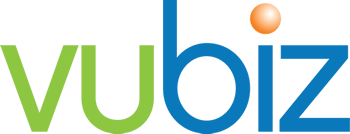 |
Written by Liz McDermott |

Businesses devastated by this year's unprecedented floods are dealing with a variety of immediate problems, including obtaining clean water, finding new homes, and removing mud and mold from flood-damaged buildings. The Environmental Protection Agency (EPA) released a Climate Change Adaptation Resource Center (ARC-X) earlier this year, noting Climate Adaptation Strategies and Tools as a preventative measure to mold-related health risks from extreme weather conditions associated with climate change.
In Las Vegas, heavy rainfall from monsoon weather caused flash floods with severe damage to buildings, as seen on Twitter.
Flood waters can cause severe structural damage to a building, which in turn can cause leaks in the ceiling and walls, creating the perfect conditions for mold to start growing. Additionally, if cleanup efforts involve throwing out contaminated furniture or carpeting, mold can start to grow on those items before they are discarded.
This is especially dangerous for people with allergies or asthma, who may not be able to avoid coming into contact with mold. For businesses, the risk of mold starts with the fact that many employees may not be able to work due to allergies or asthma. Therefore, it is important to understand how to manage the risk of mold in the workplace.
What is Mold?
Mold is a type of fungi with fungal spores that produce secondary metabolites, which makes them appear dusty and colored. These tiny and lightweight spores travel easily through the air. When present in large numbers, mold may cause allergic symptoms similar to those caused by plant pollen.
Mold can grow on virtually any substance as long as there is enough moisture and some sort of food source. When moisture accumulates in buildings or on building materials, such as carpet, ceiling tiles, insulation, drywall, wood, window sills, and HVAC systems, mold may grow excessively. Any structure left neglected after a natural disaster, such as floods, hurricanes, and tornadoes, may develop excessive mold from plumbing, roof, and window leakages. Condensation from plumbing sweating, drain pans, and wet foundations can also create mold. Improperly ventilated bathrooms and kitchens can easily contribute to mold development inside homes.
Health Hazards of Mold
Buildings that are moisture-exposed and inadequately ventilated put people at risk of contracting illnesses caused by mold. Individuals who are susceptible to mold-related illness include infants and children, elderly persons, immune-compromised patients, and those with preexisting respiratory ailments such as allergies and asthma.
Exposure to mold contamination in an indoor environment may lead to flu-like symptoms such as:
- Runny or stuffy nose
- Sneezing
- Wheezing
- Coughing
Allergy-like signs include:
- Itchy or watery eyes
- Itchy or sore throat
- Rhinitis
- Asthma
- Hypersensitivity pneumonitis
Localized skin or mucosal infections are also mold-related symptoms.
Some symptoms have been attributed to poisonous substances released by molds. Generally, molds do not cause systemic infections in humans, except for those with immune deficiencies, AIDS, uncontrolled diabetes, or those taking immune-suppressing medications. The Centers for Disease Control and Prevention (CDC) provides an overview of how individuals with weakened immune systems can avoid getting infections from molds.
Mold Safety Measures for the Workplace
It’s important to take safety precautions when working with mold in the workplace. It’s essential to wear protective clothing, including gloves, a facemask, and a respirator. You should also keep ventilation fans running at all times and use an air scrubber to remove airborne spores.
There are a number of other measures you can take to reduce the risk of exposure to mold:
- Make sure that your building is properly insulated
- Move any furniture or other items away from walls
- Keep doors and windows closed
- Keep humidity levels low
- Clean up spills immediately
- Don’t leave water standing in buckets or containers
In addition to taking these basic precautions, it’s wise to consult with a professional when there is a significant risk of exposure.
OSHA Assistance for Small Businesses
OSHA’s Free Onsite Consultation Program offers assistance to small businesses across the country, with priority given to high-hazard worksites. This consultation program is confidential and does not result in penalties or citations. The program is supported by state agencies or universities that help identify mold-related safety hazards.
Conclusion: Mold Awareness Training Protects Your Workforce
Mold awareness training is vital for every organization. It can help identify potential sources of mold and other harmful indoor air quality (IAQ) issues and provide the knowledge necessary to prevent them from happening. Mold awareness training helps employees understand how mold can spread, the symptoms they should look for, and what actions they can take to keep it out of their workspace. It also helps managers know who has the authority to take action in case of a mold problem and what they should do when they find it.
It’s important to keep in mind that mold is not always visible or easy to detect. As such, it’s important to conduct periodic inspections throughout your facility to ensure mold isn’t growing in hidden corners. If you find evidence of mold, acting quickly is important. The longer you wait, the more damage it can cause before you have a chance to contain it.
By taking these steps, you can protect yourself against mold and ensure that your organization remains healthy and productive.
Vubiz offers a Mold Awareness training course to help employers communicate the health hazards related to mold so that workers can effectively identify an issue and reduce the risk for the workplace.
For more information, please contact us to inquire about our Health & Safety training programs.

